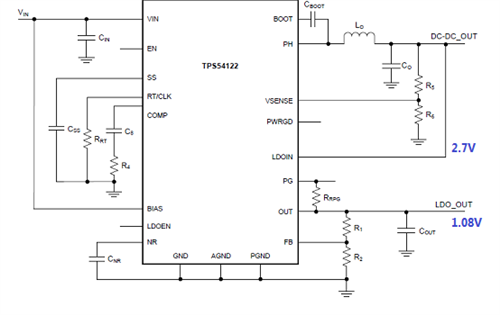Hello,
What could be the max current that could be handled by TPS7A7002 with an input of 5.5V and an output of 1.08V. The datasheet only specifies 3.36A with VIN = 1.425 V, VOUT = 0.9 × VOUT(NOM).
I'm looking for a voltage regulator that can handle at least 2A-2.5A with input of 5.5V and output of 1.08V.
Thank You in advanced for any help.




